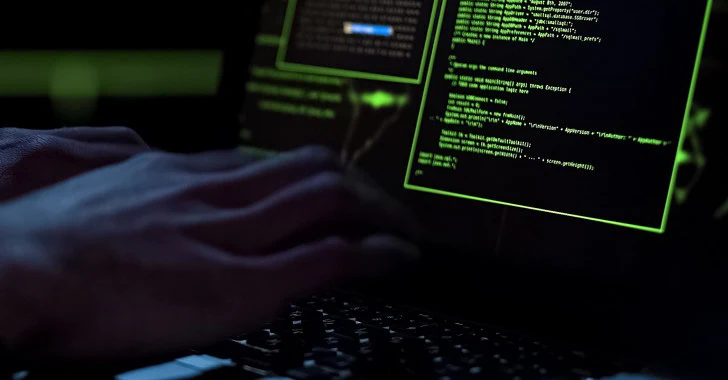Cybersecurity companies from Japan and the U.S. have warned of assaults mounted by a state-backed hacking group from China to stealthily tamper with department routers and use them as jumping-off factors to entry the networks of varied corporations within the two nations.
The assaults have been tied to a malicious cyber actor dubbed BlackTech by the U.S. Nationwide Safety Company (NSA), Federal Bureau of Investigation (FBI), Cybersecurity and Infrastructure Safety Company (CISA), Japan Nationwide Police Company (NPA), and the Japan Nationwide Middle of Incident Readiness and Technique for Cybersecurity (NISC).
“BlackTech has demonstrated capabilities in modifying router firmware without detection and exploiting routers’ domain-trust relationships to pivot from international subsidiaries to headquarters in Japan and the United States, which are the primary targets,” the companies said in a joint alert.
Focused sectors embody authorities, industrial, know-how, media, electronics, and telecommunication sectors, in addition to entities that assist the militaries of the U.S. and Japan.
BlackTechadditionally known as by the names Circuit Panda, HUAPI, Manga Taurus, Palmerworm, Pink Djinn, and Temp.Overboard, has a historical past of working towards targets in East Asia, particularly Taiwan, Japan, and Hong Kong at the least since 2007.
Pattern Micro, in December 2015, described the menace actor as well-funded and arranged, placing key business verticals – particularly authorities, shopper electronics, laptop, healthcare, and finance – positioned within the area.

It has since been attributed to a variety of backdoors comparable to BendyBearBIFROSE (aka Bifrost), Consockकिवार्स, PLEAD, TSCookie (aka FakeDead), XBOW, and Waterbear (aka DBGPRINT). PLEAD campaigns documented by the cybersecurity agency in June 2017 have entailed the exploitation of susceptible routers to be used as command-and-control (C&C) servers.
“PLEAD actors use a router scanner tool to scan for vulnerable routers, after which the attackers will enable the router’s VPN feature then register a machine as virtual server,” Pattern Micro famous on the time. “This virtual server will be used either as a C&C server or an HTTP server that delivers PLEAD malware to their targets.”
Typical assault chains orchestrated by the menace actor contain sending spear-phishing emails with backdoor-laden attachments to deploy malware designed to reap delicate knowledge, together with a downloader known as Flagpro and backdoor often known as BTSDoor, PwC disclosed in October 2021, noting “router exploitation is a core part of TTPs for BlackTech.”
Earlier this July, Google-owned Mandiant highlighted Chinese language menace teams’ “targeting of routers and other methods to relay and disguise attacker traffic both outside and inside victim networks.”
The menace intelligence firm additional linked BlackTech to a malware named EYEWELL that is primarily delivered to Taiwanese authorities and know-how targets and which “contains a passive proxy capability that can be used to relay traffic from other systems infected with EYEWELL within a victim environment.”
The in depth set of instruments factors to a highly-resourceful hacking crew boasting of an ever-evolving malware toolset and exploitation efforts to sidestep detection and keep underneath the radar for prolonged intervals by benefiting from stolen code-signing certificates and different living-off-the-land (LotL) strategies.
Fight AI with AI — Battling Cyber Threats with Next-Gen AI Tools
Able to deal with new AI-driven cybersecurity challenges? Be a part of our insightful webinar with Zscaler to deal with the rising menace of generative AI in cybersecurity.
In its newest advisory, CISA et al known as out the menace actor for possessing capabilities to develop custom-made malware and tailor-made persistence mechanisms for infiltrating edge units, usually modifying the firmware to keep up persistence, proxying visitors, mixing in with company community visitors, and pivoting to different victims on the identical community.
Put in a different way, the rogue modifications to the firmware incorporate a built-in SSH backdoor that permits the operators to keep up covert entry to the router by making use of magic packets to activate or deactivate the operate.
“BlackTech actors have compromised several Cisco routers using variations of a customized firmware backdoor,” the companies stated. “The backdoor functionality is enabled and disabled through specially crafted TCP or UDP packets. This TTP is not solely limited to Cisco routers, and similar techniques could be used to enable backdoors in other network equipment.”
Cisco, in its personal bulletin, stated probably the most prevalent preliminary entry vector in these assaults considerations stolen or weak administrative credentials and that there isn’t a proof of energetic exploitation of any safety flaws in its software program.
“Certain configuration changes, such as disabling logging and downloading firmware, require administrative credentials,” the corporate said. “Attackers used compromised credentials to perform administrative-level configuration and software changes.”
As mitigations, it is advisable that community defenders monitor community units for unauthorized downloads of bootloaders and firmware photographs and reboots and be looking out for anomalous visitors destined to the router, together with SSH.
Author: information@thehackernews.com (The Hacker Information)
Date: 2023-09-28 09:47:00



